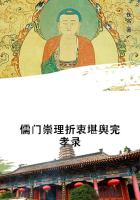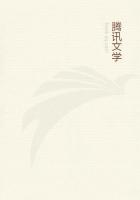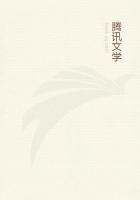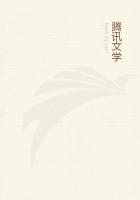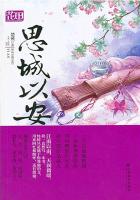Often found growing in the same bog with the tubercled species is the RAGGED or FRINGED GREEN ORCHIS (H.lacera), so inconspicuous we often overlook it unawares.Examine one of the dingy, greenish-yellow flowers that are set along the stern in a spike to make all the show in the world possible, each with its three-parted, spreading lip finely and irregularly cut into thread-like fringe to hail the passing butterfly, and we shall see that it, too, has made ingenious provision against the draining of its spur by a visitor without proper pay for his entertainment.Even without the gay color that butterflies ever delight in, these flowers contain so much nectar in their spurs, neither butterflies nor large bumblebees are long in hunting them out.In swamps and wet woodland from Nova Scotia to Georgia, and westward to the Mississippi, the ragged orchis blooms in June or July.
LARGE YELLOW POND or WATER LILY; COW LILY; SPATTER-DOCK(Nymphaea advena; Nupisar advena of Gray) Water-lily family Flowers - Yellow or greenish outside, rarely purple tinged, round, depressed, 1 1/2 to 3 1/2 in.across.Sepals 6, unequal, concave, thick, fleshy; petals stamen-like, oblong, fleshy, short; stamens very numerous, in 5 to 7 rows; pistil compounded of many carpels, its stigmatic disc pale red or yellow, with 12to 24 rays.Leaves: Floating, or some immersed, large, thick, sometimes a foot long, egg-shaped or oval, with a deep cleft at base, the lobes rounded.
Preferred Habitat - Standing water, ponds, slow streams.
Flowering Season - April-September.
Distribution - Rocky Mountains eastward, south to the Gulf of Mexico, north to Nova Scotia.
Comparisons were ever odious.Because the yellow water lily has the misfortune to claim relationship with the sweet-scented white species (q.v.), must it never receive its just meed of praise?
Hiawatha's canoe, let it be remembered, "Floated on the river Like a yellow leaf in autumn, Like a yellow water-lily."But even those who admire Longfellow's lines see no beauty in the golden flower-bowls floating among the large, lustrous, leathery leaves.
By assuming the functions of petals, the colored sepals advertise for insects.Beetles, which answer the first summons to a free lunch, crowd in as the sepals begin to spread.In the center the star-like disc, already sticky, is revealed, and on it any pollen they have carried with them from older flowers necessarily rubs off.At first, or while the stigma is freshly receptive to pollen, an insect cannot make his entrance except by crawling over this large, sticky plate.At this time, the anthers being closed, self-fertilization is impossible.A day or two later, after the pollen begins to ripen on countless anthers, the flower is so widely open that visitors have no cause to alight in the center; anyway, no harm could result if they did, cross-fertilization having been presumably accomplished.While beetles (especially Donacia) are ever abundant visitors, it is likely they do much more harm than good.So eagerly do they gnaw both petals and stamens, which look like loops of narrow yellow ribbon within the bowl of an older flower, that, although they must carry some pollen to younger flowers as they travel on, it is probable they destroy ten times more than their share.Flies transport pollen too.The smaller bees (Halictus and Andrena chiefly) find some nectar secreted on the outer faces of the stamen-like petals, which they mix with pollen to make their babies' bread.
The very beautiful native AMERICAN LOTUS (Nelumbo lutea), also known as WATER CHINKAPIN or WANKAPIN, found locally in Ontario, the Connecticut River, some lakes, slow streams, and ponds in New Jersey, southward to Florida, and westward to Michigan and Illinois, Indian Territory and Louisiana, displays its pale yellow flowers in July and August.They measure from four to ten inches across, and suggest a yellow form of the sweet-scented white water lily; but there are fewer petals, gradually passing into an indefinite number of stamens.The great round, ribbed leaves, smooth above, hairy beneath, may be raised high above the water, immersed or floating.Both leaf and flower stalks contain several large air canals.The flowers which are female when they expand far enough for a pollen-laden guest to crawl into the center, are afterward male, securing cross-fertilization by this means, just as the yellow pond lily does; only the small bees must content themselves here with pollen only - a diet that pleases the destructive beetles and the flies (Syrphidae)perfectly.
Japanese artists especially have taught us how much of the beauty of a Nelumbo we should lose if it ripened its decorative seed-vessel below the surface as the sweet-scented white water lily does.This flat-topped receptacle, held erect, has its little round nuts imbedded in pits in its surface, ready to be picked out by aquatic birds, and distributed by them in their wanderings.Both seeds and tubers are farinaceous and edible.In some places it is known the Indians introduced the plant for food.Professor Charles Goodyear has written an elaborate, plausible argument, illustrated, with many reproductions of sculpture, pottery, and mural painting in the civilized world of the ancients to prove that all decorative ornamental design has been evolved from the sacred Egyptian lotus (Nelumbo Nelumubo), still revered throughout the East (q.v.).
MARSH MARIGOLD; MEADOW-GOWAN; AMERICAN COWSLIP(Caltha palustris) Crowfoot family'
Flowers - Bright, shining yellow, 1 to 1 1/2 in.across, a few in terminal and axillary groups.No petals; usually 5 (often more)oval, petal-like sepals; stamens numerous; many pistils (carpels)without styles.Stem: Stout, smooth, hollow, branching, 1 to 2ft.high.Leaves: Mostly from root, rounded, broad, and heart-shaped at base, or kidney-shaped, upper ones almost sessile, lower ones on fleshy petioles.

